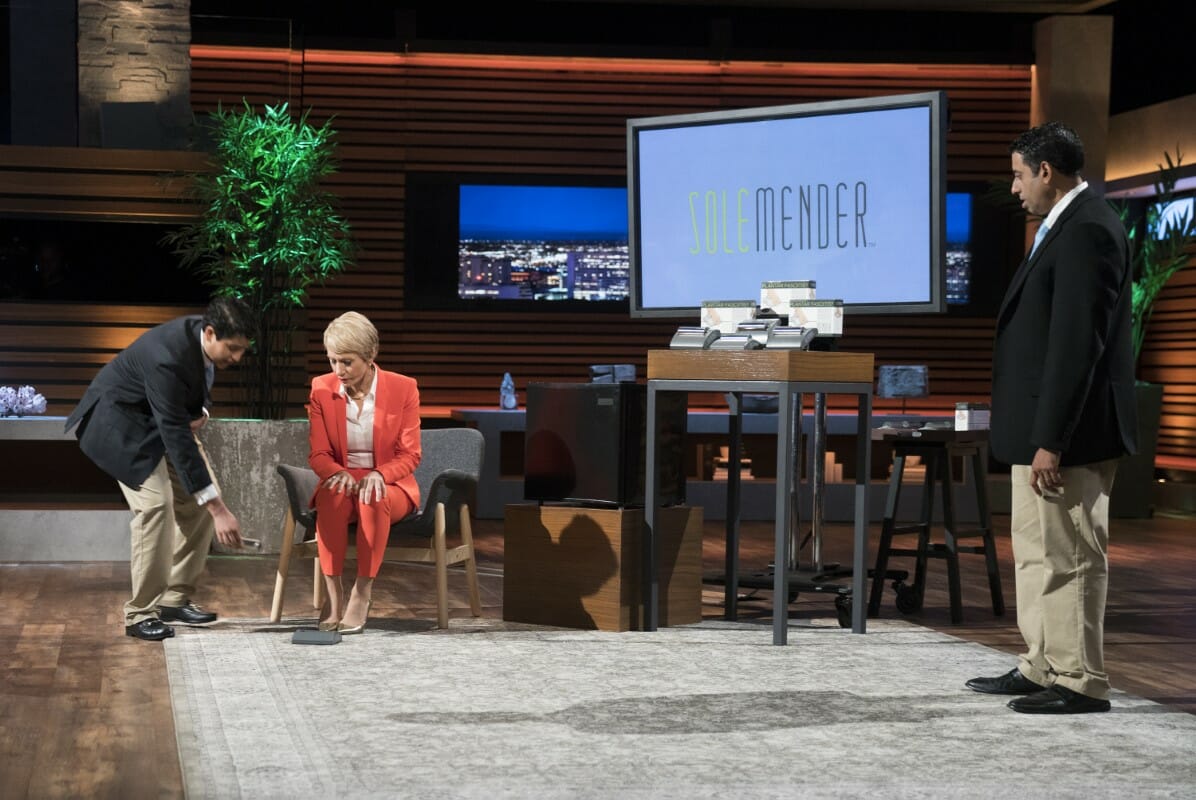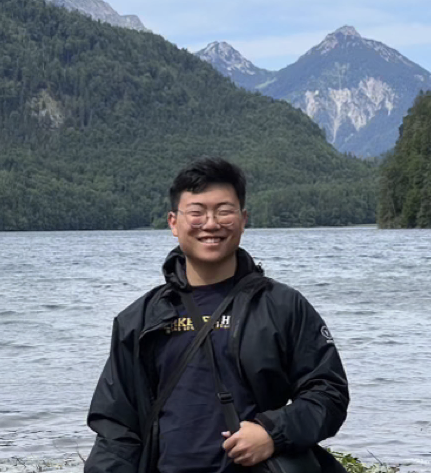Humans of Haas: Ehan Kamat
Ehan Kamat, a senior majoring in Business and French, has a different life journey than most young adults around his age. He started his own company, Solemender, at the age of 14, with its patented device that works to combine cold and massage therapy to treat foot pain. With the outstanding achievement, Ehan and his team had a season 9 Shark Tank appearance, which have further gone on to multiple QVC airings and several other events in the same vein. Ehan had also done a TedTalk to share his valuable experience and insights as an inventor and entrepreneur. In this article, we’ll be going through his journey, especially the transition between the inventor and entrepreneur, and some takeaways to those who want to follow his steps.

When did you start inventing things? What are some qualities of an inventor?
I’ve always been a maker. My family from the Midwest, St. Louis, Missouri, has a barn back home. I grew up messing around the barn, making random stuff, or taking things apart and reassembling them. I used to take apart antique French clocks and computers and then rebuild them. I also built an enormous 3D printer, which you can pretty much make anything you want with, like furniture. In the winter, we would grow lettuce on the hydroponic farm that I built on our wall, because in the midwest, everything freezes over. I do crazy things. I’m all over the place. It’s really just what captures my attention, or what’s my project at that point, and I’ll go from that.
Inventors are always very inquisitive, looking to answer questions or to seek out better ways to solve problems. Moreover, inventors always look at things from creative perspectives. “Impossibility” is never a word in the inventor’s dictionary. You have to look at things as if everything is possible, because everyone’s going to tell you that everything is impossible. It’s rather easy to say something is impossible, but if you keep trying and keep questioning the status quo, that’s when you really see the inventive spirit come to light. This can sometimes be really tough, unless you’re given concrete feedback that shows otherwise.
For people who have trouble forming this “everything is possible” mindset, start small. Take something you think is mildly impossible, or a small daily task that you think you cannot achieve, and work past it to show yourself that it is indeed possible to move through the roadblocks. Prove to yourself slowly that you can make progress on whatever you’re working on. It helps to start opening your eyes up, which is super valuable.
What was the turning point for you to start your own business? What were some difficulties along the way?
I came up with the product when I was 12 and started up the company when I was 14. At the age of 12, I saw my mom suffering from foot pain, specifically a condition called Plantar Fasciitis. Plantar Fasciitis is surprisingly common. It’s this condition where you get micro tears in the tendon that runs along the bottom of your foot, making it painful to walk or move around, especially in the morning. I didn’t want to see my mom in pain, so I promised myself, “I must find a better way to help her out!”
Both my parents are doctors, so I’m very lucky to be in the medical bubble. What they were recommending to their patients at that time was either getting a surgery, which is very intensive and invasive, or taking a water bottle, freezing it, and rolling your foot on it, for it combines cold and massage therapy to help treat the condition. So, I started to freeze water bottles, yet it turned out that they’re not the most fun thing to freeze. They roll away. They make a mess. They explode in the freezer. It’s just not an ideal situation. I figured out that I could make a more efficient product. I made a little prototype using cardboards and eventually a 3D printer. My mom tried it out and thought it was the greatest thing in the world. We started talking to patients about the product, and they were all super excited. Eventually, I started building more prototypes and letting customers and patients test it out, realizing that we might have something that actually is valuable to a lot of people.
Two years later, I decided to found a company featuring my foot pain relief product – Solemender. It’s been a crazy experience ever since. We started working with manufacturers in Guangzhou, China and bought a ton of units. I tried to sell the product to as many stores as I could by going door to door or calling the managers. I’d focus on really local store owners, who resonated with the fact that I’m an inventor or an entrepreneur starting out from the Midwest.
I was very naive when I first started out. I didn’t consider how stores do purchasing, or where they actually look for products, like in catalogs or from wholesalers. I simply did my own thing. Because of that, I got a lot of rejections. But at the same time, those few people that really believed in what I was doing took it and ran with it, forming a stronger relationship. Believe it or not, I’m still in contact with a lot of people that I talked to when I was 14 years old. I love working with them. It was one of the most rewarding experiences.
I started the company relatively young, and no one in my family had business expertise. Thus, I was really on my own. In a town where things tend to be more antiquated and oldschool, people weren’t ready to listen to a fourteen-year-old. It was difficult to find audiences that were receptive to what I was working on. However, once I started finding that audience, it built up my confidence.
Another big roadblock for me was production, since I didn’t have any connections into the world of business. I had to learn through first hand experiences, which was a very difficult learning curve. Fortunately, later on in my entrepreneur journey, I got mentors from Washington University and a couple others from the business world guided me in the right direction. I never stopped seeking opportunities to meet successful predecessors. For example, one thing I valued the most from Shark Tank was being able to exchange thoughts with so many entrepreneurs.

How did you transform from an inventor into an entrepreneur? What are some qualities of an entrepreneur?
The core difference between the inventor and entrepreneur is that inventors focus on solving the problems, whereas entrepreneurs focus on building the bridge and getting the newfound solution into the hands of those who need it the most. That’s a very simplified version, but at its core it comes down to execution. It’s definitely not an easy transition. Being interested in making and building things, I was always more on the invention side of it. But it’s one of those things that comes naturally in the progression of looking at the life cycle of an inventor. Once you come up with an idea, you have to figure out what to do with it. The only way to share it to the world is to move toward being an entrepreneur. I think what bridges up the gap is having the realization that you want to share your project with the world.
There are a lot of things going on in entrepreneurship. We have operations and warehouses. We have our marketing team. We have a group handling finance. For many startups, fundraising is the most difficult part. We’re really fortunate that funding was not a big obstacle for us. Our initial investment was around $10,000, which we used mostly to buy injection molds from China. Today, there are plenty of great resources out there, such as Kickstarter. It is more common to see a product being launched right away through pre-orders or crowdfundings. If you have a great idea for a consumer good, but you don’t have the funds to start out, rallying your consumers to support you could be the most powerful way to go about it. Money is less and less of a concern than it used to be. It does mean it’s more competitive as well. But, if you really believe in what you’re working on, you’ll make it happen.
Another key element is starting with motivation and figuring out why you’re motivated to be an entrepreneur. For me, it has always been solving a problem and getting it into the hands of those who need it the most. You don’t need to look for extra motivation factors to force yourself into that entrepreneur ground. Once you identify that, do your research. Learn about the problem you’re trying to solve and go from there.
I believe that there are a lot of entrepreneurs today who seek out the problem and try to fashion a solution, when it’s actually much more authentic when you stumble across the problem. Just keep your eyes open, make sure that you’re seeing the problems as they come up, and see if you can bring value to people in the form of problem solving.
Last but not least, an entrepreneur needs to be a really good communicator. Entrepreneurs must focus on the people that they’re trying to help. I strongly dislike when somebody tries to make a jump to a hardsale with you, regardless of what it is – whether they’re trying to interact with you, or trying to reinforce a relationship. There’s a lot of relationship building with your consumers or anybody you’re working with at the initial stages, before you can move on to later stages of advertisements. For me, to be the most persuasive and have the most influence, building strong foundational relationships is the most important task
What’s next?
Solemender recently hired a new marketing team and we’re currently putting a big emphasis on product expansion and innovation. We’ve been very focused on our core product line, working on different types of rollers, massagers, and other pieces that we can add onto the existing products. At the same time, we’re also working on new things like lidocaine. New opportunities in over the counter treatments present a great opportunity to bring value to our customers. Solemender has a valuable asset to realize these new opportunities – our customer base. Customers typically will tell us what they want directly. I’ll get up to 20 emails a day directing at “why can’t I use it for this,” “why can’t we do this with it,” so on and so forth. Because of that, it’s relatively easy to figure out what they’re looking for and what they really want. In this case, our job is simply trying our best to meet their needs.
In addition, I’m personally working on a project in the wine industry located in the Napa Valley in the town of St. Helena. I recently acquired a lot of knowledge and experience in Napa, where we will be planting vines and working on a novel wine venture. It’s one of those situations where I dove head first in and am now learning everything very quickly. I’m from the Midwest where the main crops are corn and soybeans. As a result, I know next to nothing about grape sales and vines. It’s a very different type of agriculture than I’m used to and an industry which I don’t normally have access to, so I’m very excited!


